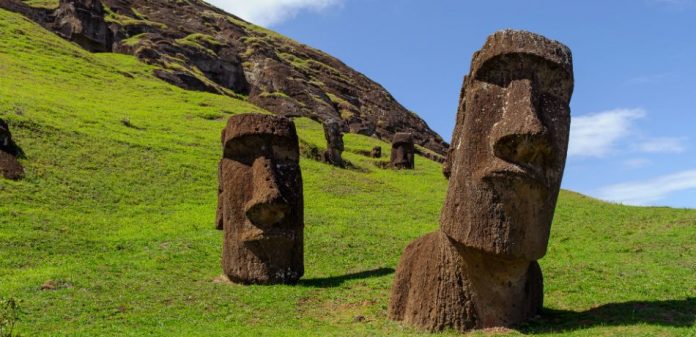Scientists may have solved one of the riddles about the famous giant statues of Easter Island—why long-ago inhabitants placed them where they did.
A new study in PLOS One makes the case that the statues went up to designate sources of fresh water, one of the island’s most precious commodities. US researchers focused on the eastern part of the Chilean island, where 93 of the platforms on which the statues stand were built, reports CNN. They soon zeroed in on a correlation: The statues went up around sites the researchers call “coastal seeps”—where fresh water seeped to the surface at certain times, depending on the tide. They now plan to examine the rest of the island to see if the pattern holds, per a post at Eureka Alert.
“Every time we saw massive amounts of fresh water, we saw giant statues,” Carl Lipo of Binghamton University in New York tells the Guardian. “It was ridiculously predictable.”
Typically, this meant the statues were near the coast. But others turned up around caves, and, sure enough, those caves also were sources of fresh water. Why the need to put up statues? Researchers can only guess, but they think erecting statues (perhaps to guard the water) served as an important community function.
The size of particular statues might have depended on the quality of the water supply, allowing rival communities to essentially show off to each other.
For the record, a UCLA professor thinks this water-statue correlation is “highly unlikely.”





























